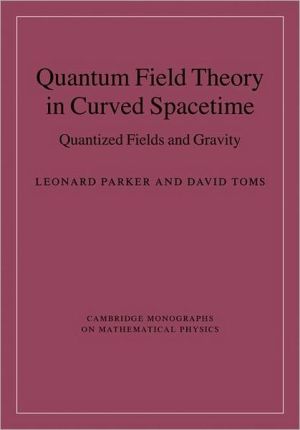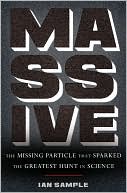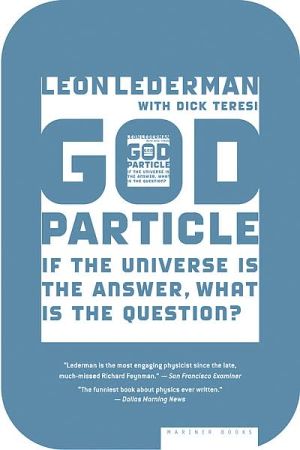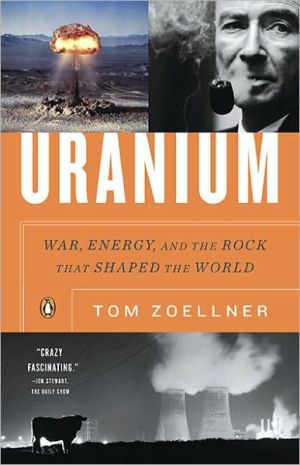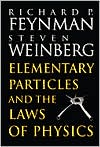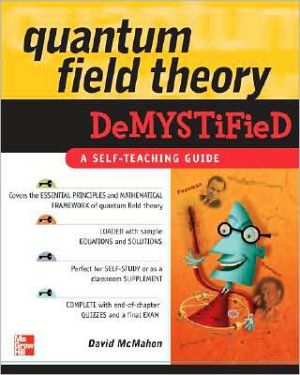Quantum Field Theory in Curved Spacetime: Quantized Fields and Gravity
This book develops quantum field theory in curved spacetime in a pedagogical style, suitable for graduate students. The authors present detailed, physically motivated, derivations of cosmological and black hole processes in which curved spacetime plays a key role. They explain how such processes in the rapidly expanding early universe leave observable consequences today, and how in the context of evaporating black holes, these processes uncover deep connections between gravitation and...
Search in google:
This highly acclaimed series of monographs provides introductory accounts of specialized topics in mathematical physics for graduate students and research workers. The monographs in this series are of outstanding scholarship and written by those at the very frontiers of research. Subject areas covered include cosmology, astrophysics, relativity theory, particle physics, quantum theory, nuclear physics, statistical mechanics, condensed matter physics, plasma physics and the theory of chaos.Quantum filed theory in curved spacetime has been remarkably fruitful. It can be used to explain how the large-scale structure of the universe and the anisotropies of the cosmic background radiation that we observe today first arose. Similarly, it provides a deep connection between general relativity, thermodynamics, and quantum field theory. This book develops quantum field theory in curved spacetime in a pedagogical style, suitable for graduate students.The authors present detailed, physically motivated derivations of cosmological and black hole processes in which curved spacetime plays a key role. They explain how such processes in the rapidly expanding early universe leave observable consequences today, and how, in the context of evaporating black holes, these processes uncover deep connections between gravitation and elementary particles. The authors also lucidly describe many other aspects of free and interacting quantized fields in curved spacetime.
Preface xiAcknowledgments xiiiConventions and notation xv1 Quantum fields in Minkowski spacetime 11.1 Canonical formulation 21.2 Particles 131.3 Vacuum energy 211.4 Charged scalar field 241.5 Dirac field 271.6 Angular momentum and spin 322 Basics of quantum fields in curved spacetimes 362.1 Canonical quantization and conservation laws 372.2 Scalar field 432.3 Cosmological model: Arbitrary asymptotically static time dependence 472.4 Particle creation in a dynamic universe 512.5 Statistics from dynamics: Spin-0 542.6 Conformally invariant non-interacting field 562.7 Probability distribution of created particles 582.8 Exact solution with particle creation 612.9 High-frequency blackbody distribution 632.10 de Sitter spacetime 642.11 Quantum fluctuations and early inflation 732.12 Quantizing the inflaton field perturbations 772.13 A word on interacting quantized fields and on algebraic quantum field theory in curved spacetime 882.14 Accelerated detector in Minkowski spacetime 913 Expectation values quadratic in fields 933.1 Adiabatic subtraction and physical quantities 933.2 Energy-momentum tensor from trace anomaly 1073.3 Renormalization in general spacetimes 1103.4 Gaussian approximation to propagator 1153.5 Approximate energy-momentum tensor in Schwarzschild, de Sitter, and other static Einstein spacetimes 1183.6 R-summed form of propagator 1293.7 R-summed action and cosmic acceleration 1313.8 Normal coordinate momentum space 1343.9 Chiral current anomaly caused by spacetime curvature 1444 Particle creation by black holes 1524.1 Introduction 1524.2 Classical considerations1534.3 Quantum aspects 1624.4 Energy-momentum tensor with Hawking flux 1744.5 Back reaction to black hole evaporation 1784.6 Trans-Planckian physics in Hawking radiation and cosmology 1804.7 Further topics: Closed timelike curves; closed-time-path integral 1825 The one-loop effective action 1845.1 Introduction 1845.2 Preliminary definition of the effective action 1855.3 Regularizatlon of the effective action 1905.4 Effective action for scalar fields: Some examples 2005.5 The conformal anomaly and the functional integral 2165.6 Spinors in curved spacetime 2215.7 The effective action for spinor fields 2455.8 Application of the effective action for spinor fields 2535.9 The axial, or chiral, anomaly 2576 The effective action: Non-gauge theories 2686.1 Introduction 2686.2 The Schwinger action principle 2716.3 The Feynman path integral 2776.4 The effective action 2806.5 The geometrical effective action 2836.6 Perturbative expansion of the effective action 2956.7 Renormalization of an interacting scalar field theory 3026.8 The renormalization group and the effective action 3186.9 The effective potential 3226.10 The renormalization of the non-linear sigma model 3316.11 Formal properties of the effective action 337Appendix 3447 The effective action: Gauge theories 3487.1 Introduction 3487.2 Gauge transformations 3507.3 The orbit space and the gauge condition 3597.4 Field space reparameterization and the Killing equation 3687.5 The connection and its consequences 3757.6 The functional measure for gauge theories 3857.7 Gauge-invariant effective action 3907.8 Yang-Mills theory, concluded 3997.9 Scalar quantum electrodynamics 407Appendix 420Appendix: Quantized Inflaton Perturbations 422References 426Index 445
